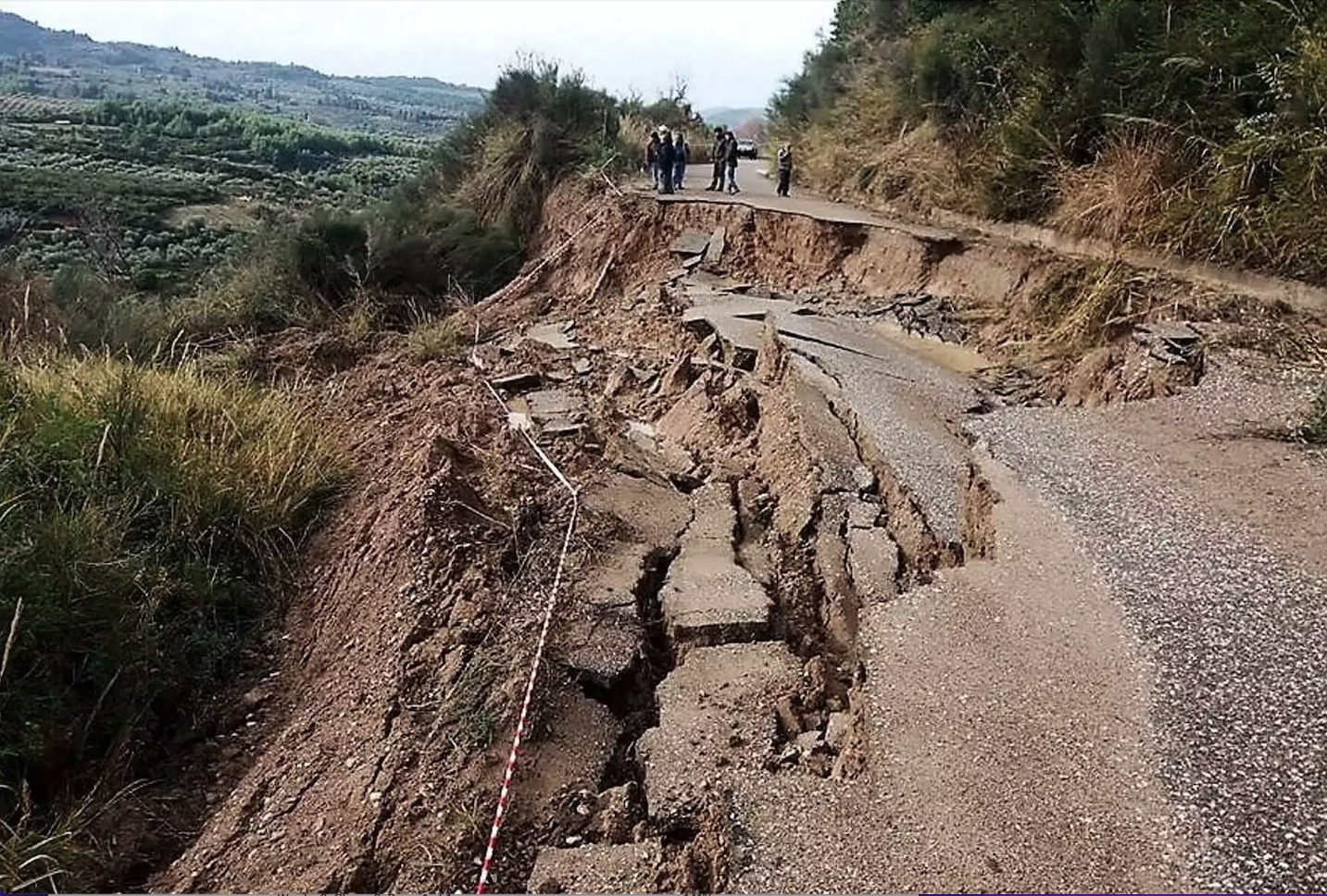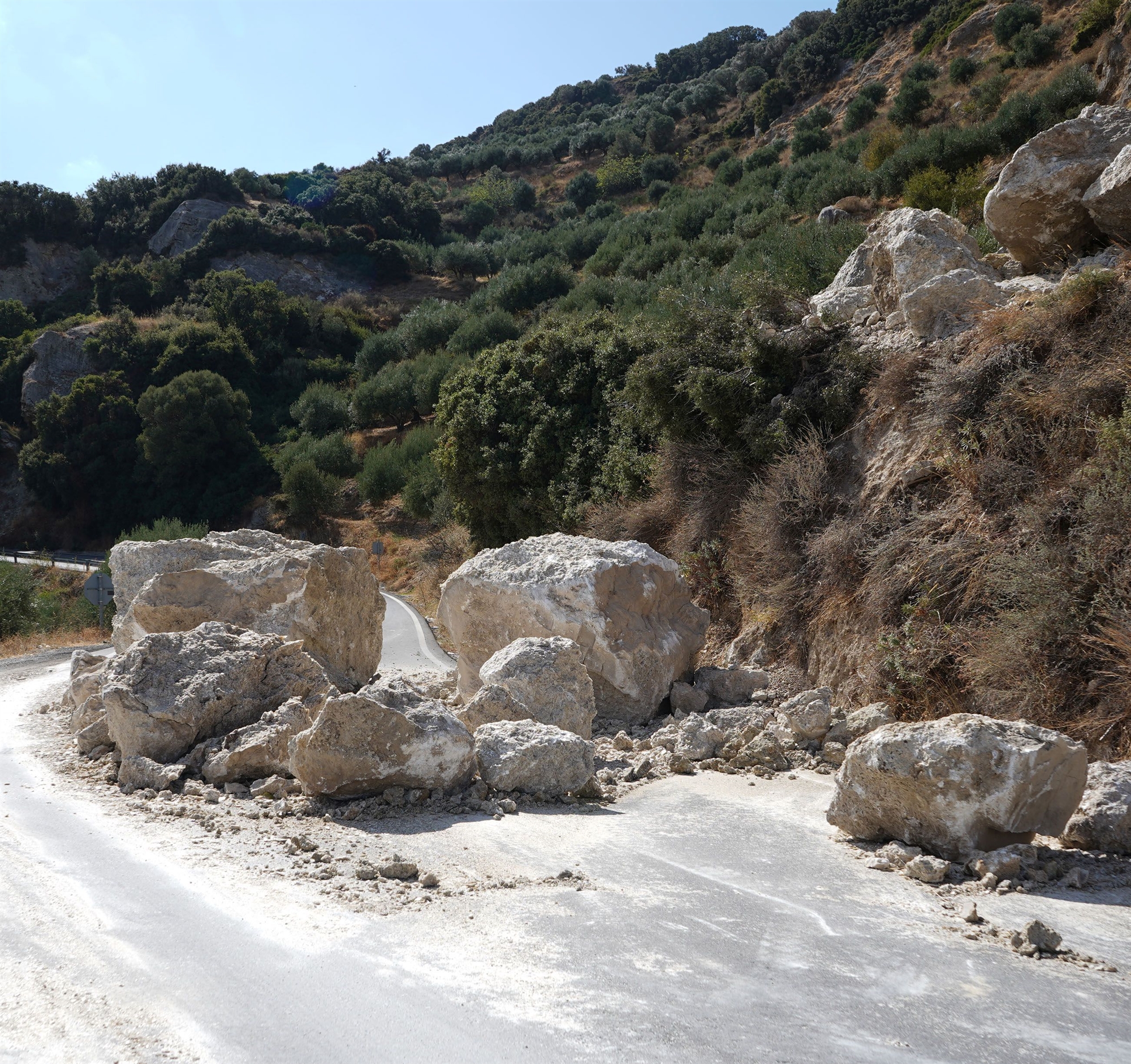
“Alarm” in the state apparatus was caused by a collapse of stones in Navagio Bay in Zakynthos, Yesterday morning. Although there were no casualties, access to the famous beach was temporarily banned, and traffic in the bay was required to be regulated so that bathers did not approach the slopes. Yesterday’s incident, which was linked to an earthquake, brings to the fore the broader problem of increasing landslides, which is directly related to increased rainfall, and therefore changing of the climate.
The rupture of rocks on the slopes of the bay (not on the coast) occurred after an earthquake measuring 5.4 on the Richter scale, the source of which was located between Zakynthos and Kefalonia. The Port Authority of Zakynthos banned visitors from landing as a precaution, and a Committee meeting was later held for the tourist use and protection of the Zakynthos wreck. For the duration of its operation, it was decided to introduce a new recommendation to strictly control visitor access only to permitted areas, while respecting the maximum number of visitors so that bathers do not approach the slopes of the bay.
EAGME Details
The incident coincided with the publication of data from the Hellenic Geological and Mining Research Authority EAGME (formerly IGME) on landslide events in our country over the past two years. Thus, according to the reports on landslides issued by EAGME for each year:
• 189 major landslides were recorded in 2021. The region of Western Greece was the most affected by landslides (35.45%), followed by the regions of Epirus (15.34%), Thessaly (13.76%), the Ionian Islands (10.58%) and the South Aegean (8. 99%). occurred in the regions of Crete (5.82%), Central Greece (4.23%) and Peloponnese (2.65%), and much less in the rest of the country.
• In 2020, 312 serious landslides were recorded. The most affected region is Thessaly, which accounts for 62.82% of recorded landslides, followed by the regions of Central Macedonia with 11.54%, Central Greece with 7.69% and Epirus with 5.77%.
• Over the past five years, 343 landslides were recorded in 2018, 326 in 2019, 312 in 2020, 189 in 2021, and 73 incidents this year since the beginning of the year.

“In general, there has been an increase in landslide events over the past decade, which is related to the intensity of weather events due to climate change,” says Mr. Dionisis Gutis, CEO of EAGME. “The areas where more landslides occur are those where geological conditions favor them: Eurytania, mountainous Thessaly, Epirus, Ilia, Achaia and Evia. In Ilia and Evia, landslides were also affected by large fires that destroyed the vegetation, which gradually led to the loosening of the soils. Of course, there is no shortage of cases where landslide phenomena are intensified due to man-made interventions.”
“The most severe landslides this year occurred in Etoloakarnania after heavy rains late last year,” explains Mr. Nikos Nicolaou, director of EAGME’s Technical Geology Department. “As a result, many old landslides have become active, and new ones have appeared in many villages in the municipalities of Agrini and Nafpaktia.
There is a lot of damage in this area, both to the old road network and to houses. In many cases, it will be necessary to carry out special studies for the demolition of houses, the opening of roads and the construction of new technical structures. Suffice it to say that many provincial roads between Evrytania and mountainous Nafpaktia are still closed.”

Famous Phenomenon
As for the fall of stones in the bay of Navagio in Zakynthos, this is a well-known phenomenon. “The last rockfalls were in 2018. We conducted an autopsy and proposed to completely ban not only access to the beach, but also approach less than 25 meters from the coastline,” says Mr. Nicolau. “There are many reasons: the rocks there, white limestones, are highly fragmented, with large slopes. Pits formed on the slopes due to previous landslides. In addition, due to marine erosion, rain and seismic activity, there are large pieces here ready to break off. We asked to block the sea area as well, as a landslide in the sea can cause strong waves and threaten swimmers.”
The EAGME Department of Technical Geology has set up an Immediate Intervention Team that is activated after major landslides, major earthquakes or other natural disasters of geological origin. Since 2016, the team has also covered the needs of the General Secretariat for Civil Protection by going directly to the affected areas to assess the risk and provide instructions to the competent authorities.
Source: Kathimerini
James Springer is a renowned author and opinion writer, known for his bold and thought-provoking articles on a wide range of topics. He currently works as a writer at 247 news reel, where he uses his unique voice and sharp wit to offer fresh perspectives on current events. His articles are widely read and shared and has earned him a reputation as a talented and insightful writer.